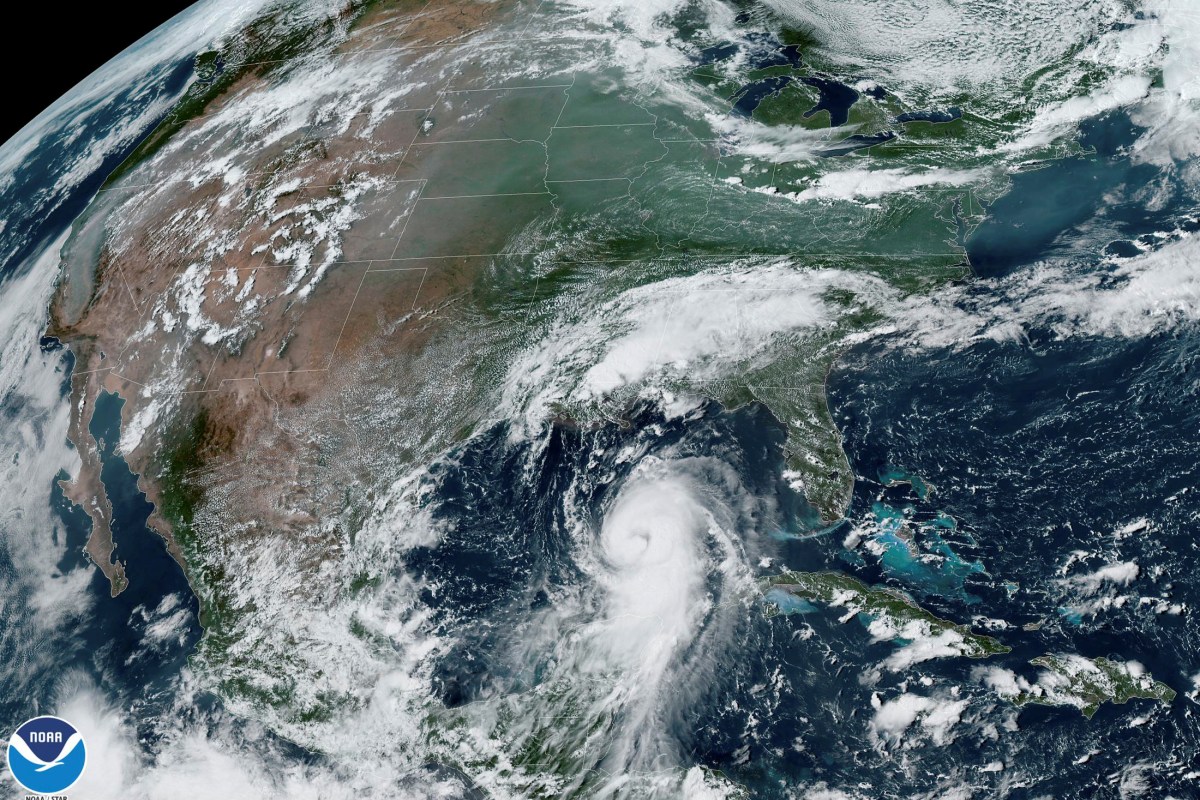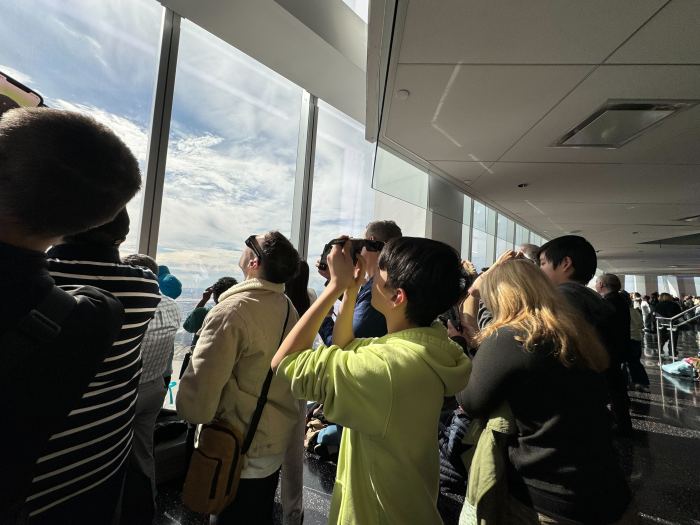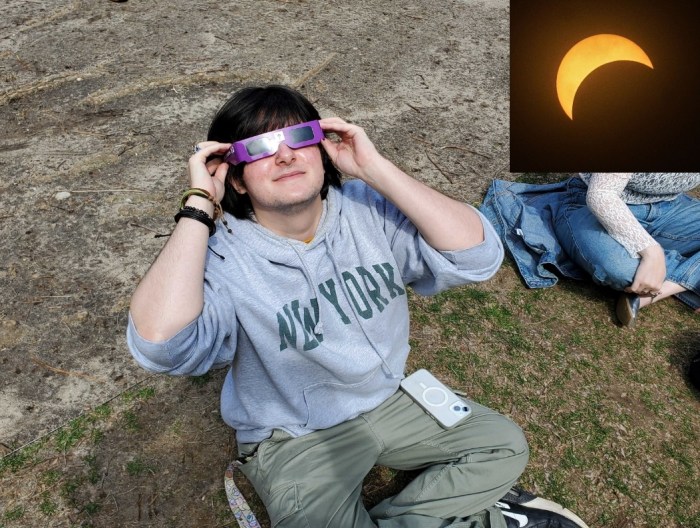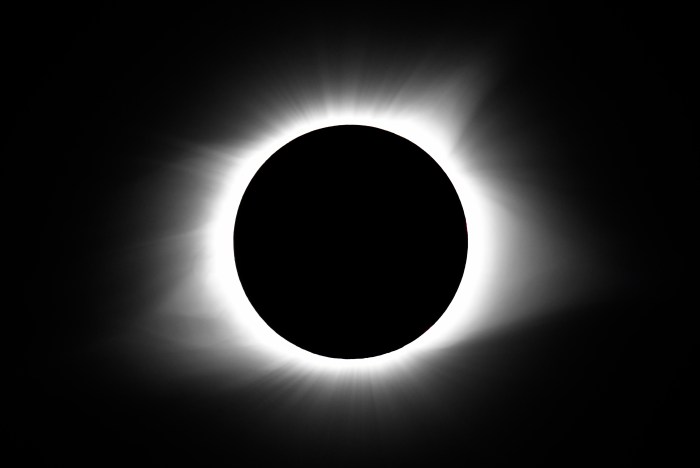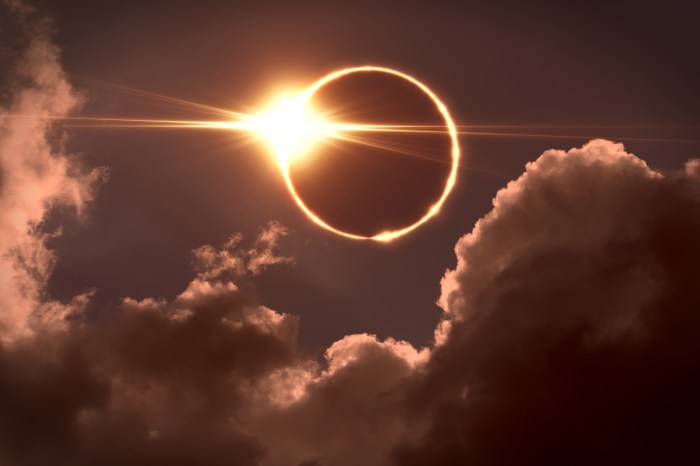BY ERNEST SCHEYDER
Hurricane Laura was expected to rapidly strengthen to a Category 4 hurricane on Wednesday on a steady track to hit the Texas-Louisiana Gulf Coast after dark, causing catastrophic damage, the National Hurricane Center said.
The storm, already a Category 3 on the five-step Saffir-Simpson scale for measuring hurricane intensity, was about 235 miles (375 km) southeast of Galveston, Texas, with maximum sustained winds of 125 miles (205 km) per hour, the Miami-based forecaster said. Category 4 hurricanes can pack winds of up to 156 miles (250 km) per hour.
Skies were dark and a light rain was falling on Wednesday morning in the island city of Galveston, which was mostly boarded up.
Randall Gilmore, a 48-year-old maintenance worker, was riding his bike along the city’s sea wall, watching the clouds roll in. Work had prevented him from evacuating yet, but he planned to move to nearby Texas City in the afternoon.
“This storm doesn’t look like it’ll be bad so far, but I feel it’s better to leave. You never know what to expect with these storms. Sometimes hurricanes can fuel tornadoes, and I don’t want to be here in Galveston if that happens,” Gilmore said.
More than 420,000 Texas residents and another 200,000 people in neighboring Louisiana were under mandatory evacuation orders on Wednesday.
“You only have a few hours to prepare and evacuate for #HurricaneLaura. Wherever you are by noon is where you’ll have to ride out the storm,” Louisiana Governor John Edwards tweeted Wednesday morning.
Laura battered the Caribbean over the weekend as a tropical storm, killing 24 people between the Dominican Republic and Haiti and damaging thousands of homes and electricity infrastructure.
State and federal emergency management agencies were rushing to provide shelter accommodations and get first responders in place.
Federal Emergency Management Agency Administrator Pete Gaynor posted pictures of teams bringing portable shelters to Camp Beauregard, Louisiana on Tuesday, and Texas Governor Greg Abbott said his state’s National Guard was in place with high-water vehicles and rescue helicopters.
The storm was moving at about 16 miles (26 km) per hour Wednesday morning. Storm surge along the Gulf Coast could raise water levels to as high as 20 feet (6 m) in parts of Cameron Parish, Louisiana, and Laura would likely drop 5 to 10 inches (13 to 25 cm) of rain over the region, the National Hurricane Center (NHC) said.
“Unsurvivable storm surge” from Sea Rim State Park, Texas, to Intracoastal City, Louisiana could penetrate up to 30 miles inland from the immediate coastline, the NHC said in a Wednesday morning advisory.
“I’m a little excited and nervous, but not scared,” said Carlos Morales, 21, who works for a fencing company in Galveston. He said he planned to ride out the hurricane in his five-foot elevated house about 10 blocks from the beach.
The storm was also expected to spawn tornadoes Wednesday night over Louisiana, far southeastern Texas, and southwestern Mississippi, the NHC said. It added there would likely be widespread flooding from far eastern Texas across Louisiana and Arkansas from Wednesday to Thursday.
Crude oil production in the Gulf of Mexico has been paralyzed as companies batten down operations. Output cuts are nearing 90%, a level not seen since Hurricane Katrina in 2005.
LANDFALL DURING PANDEMIC
Texas is just coming down from a period of peak COVID-19 cases and deaths, and there are currently some 108,000 active cases of the virus, according to the state health department. More than 41,000 hospital beds were occupied as of Tuesday, including more than 12,000 in Houston and Galveston, state data showed.
Hidalgo County, Texas, urged voluntary evacuation in the coastal region surrounding Houston, and shelters were set up in San Antonio, Dallas and Austin. Thousands of evacuees would be sheltered at hotels in Austin to encourage social distancing, the Austin American-Statesman reported.
Houston, which lies in Laura’s path and has closed public COVID-19 testing sites ahead of the storm, was pummeled in 2017 by Hurricane Harvey, which killed at least 68 people and caused $125 billion in property damage. The fourth largest U.S. city, with 2.3 million residents, Houston is about 45 miles (70 km) north of the open water of the Gulf of Mexico.
Lina Hidalgo, the top executive for Harris County, which encompasses Houston, warned of deadly winds and a destructive storm surge after Laura makes landfall.
“This storm certainly can cause unprecedented devastation,” Hidalgo said at a news conference on Tuesday. “We truly have to say: Prepare for the worst.”



